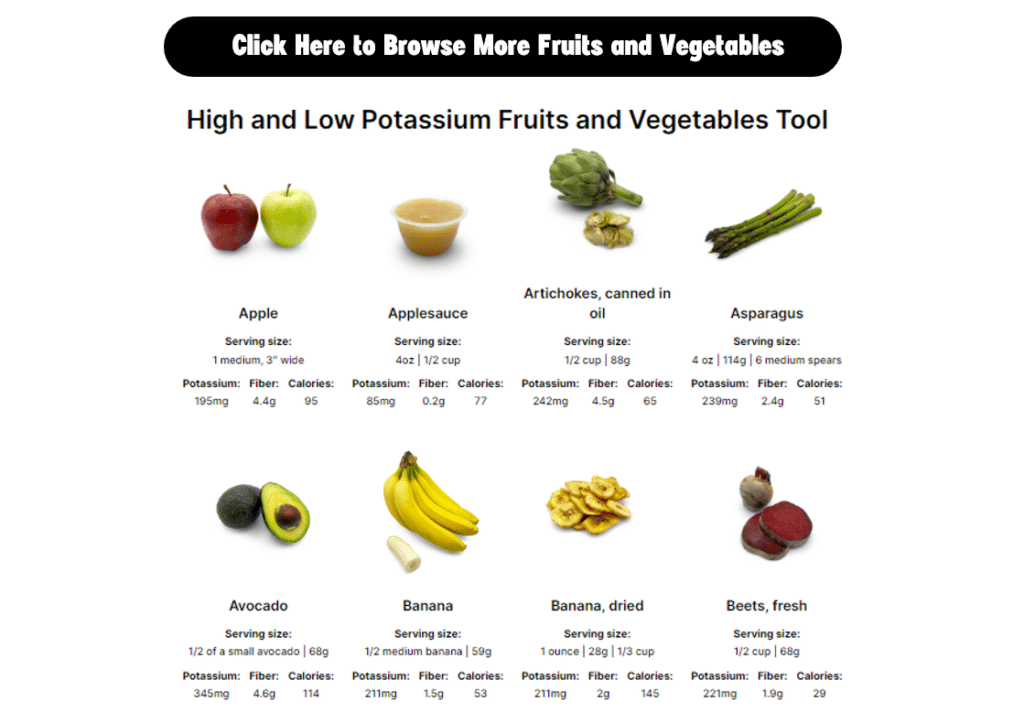Are green beans good for kidneys?
Yes, green beans are rich in antioxidants, fiber, and vitamins that are beneficial to people with kidney disease.
This post may contain affiliate links through which we may earn a small commission to help keep this website free.
Are green beans high in potassium?
One half cup of fresh green beans contains 131mg of potassium making them a low potassium vegetable.
Boiling green beans will remove additional potassium. One half cup of boiled green beans contains approximately 91mg of potassium.
Canned green beans are also lower in potassium than fresh green beans because of the processing in water (similar to boiling). One half cup of canned green beans contains only 65mg of potassium.
When buying canned green beans, be sure to select cans with no salt added. Many canned foods are high in sodium, and too much sodium is bad for kidneys. Below are some canned green beans you can buy with no salt added:
- Del Monte Foods Cut Green Beans No Salt
- Happy Belly Cut Green Beans, No Salt Added
- 365 by Whole Foods Market, Beans Green Cut No Salt Added Organic
Most kidney professionals consider a vegetable to be high potassium if it contains more than 200mg of potassium per serving.
If you have kidney disease, you should not restrict your intake of fruits and vegetables because of potassium content unless instructed by your kidney dietitian or healthcare provider. Many people who have kidney disease do not need to restrict their intake of potassium. There are many other factors that could cause you to have high potassium levels that are not related to the food you eat. You can learn more about potassium and kidney disease through our courses.
Are green beans high in phosphorus?
No. One half cup of fresh green beans contains about 24mg of phosphorus. The phosphorus found in green beans is natural and poorly absorbed by the body, so they are considered a low phosphorus food.
For more information about phosphorus and kidney disease, check out our youtube video.
Are green beans high in oxalates?
Green bean are considered a moderate oxalate food. They contain 24mg of soluble oxalate per 100g portion. (source) If you are prone to developing kidney stones, avoiding oxalates is not necessarily the best approach to preventing future stones. I recommend signing up for my free kidney stone newsletter where I talk a lot about kidney stones, how to read your labwork, and what nutrition strategies to implement to prevent future stones.
Oxalates are naturally occurring compounds found in many foods. When consumed, oxalates can bind with calcium in the body to form crystals, which can contribute to the formation of kidney stones in some individuals.
Kidney stones are hard deposits that form in the kidneys when there are high levels of certain substances, such as calcium, oxalate, and uric acid, in the urine. The most common type of kidney stone is calcium oxalate stones, which are formed when calcium and oxalate combine in the urine.
While oxalates are present in many foods, not everyone who consumes oxalates will develop kidney stones. Factors such as individual susceptibility, overall diet, and lifestyle choices play a role in kidney stone formation.
The highest oxalate fruits and vegetables are spinach, rhubarb, and swiss chard. However, it’s important to note that the mere presence of oxalates in food does not guarantee kidney stone formation. If you are not prone to developing kidney stones, then there is no reason to avoid foods that are high in oxalate.
What are the benefits of green beans?
- Green beans contain vitamins and antioxidants. Antioxidants consumed through fruits and vegetables are considered to have protective effects against many chronic diseases.
- Green beans contain fiber. The fiber content helps prevent constipation and supports a healthy digestive system. Avoiding constipation is an important way of helping maintain good potassium levels.
- Research shows that a low intake of fruits and vegetables is associated with an increased risk of developing kidney failure in people with kidney disease (as well as those who don’t have kidney disease.
Healthy ways to eat green beans
- Boiling green beans is a common way to prepare them. If you choose to add some pork to enhance the flavor, be sure to choose a product with no added phosphates, such as one of our low phosphorus bacons.
- Steaming: Steaming green beans is a simple and healthy method that helps retain their nutrients and crisp texture.
- Stir-frying: Stir-frying green beans with a mix of colorful vegetables can create a flavorful and healthy dish. Heat a small amount of oil in a wok or large skillet, add trimmed green beans, and cook over medium-high heat for about 5 minutes until they are crisp-tender.
High and Low Potassium Fruit and Vegetable Tool
Looking for more information on other kidney friendly fruits and vegetables? Check out our Fruit and Vegetable Potassium Tool.

